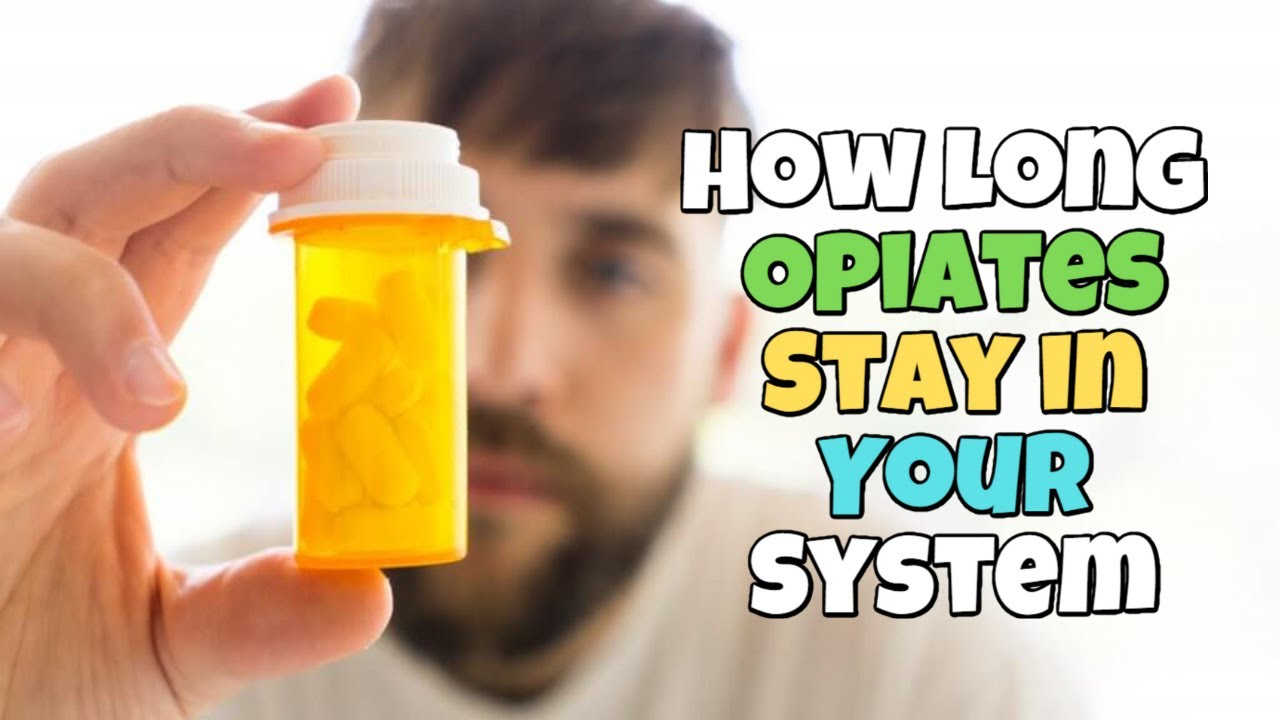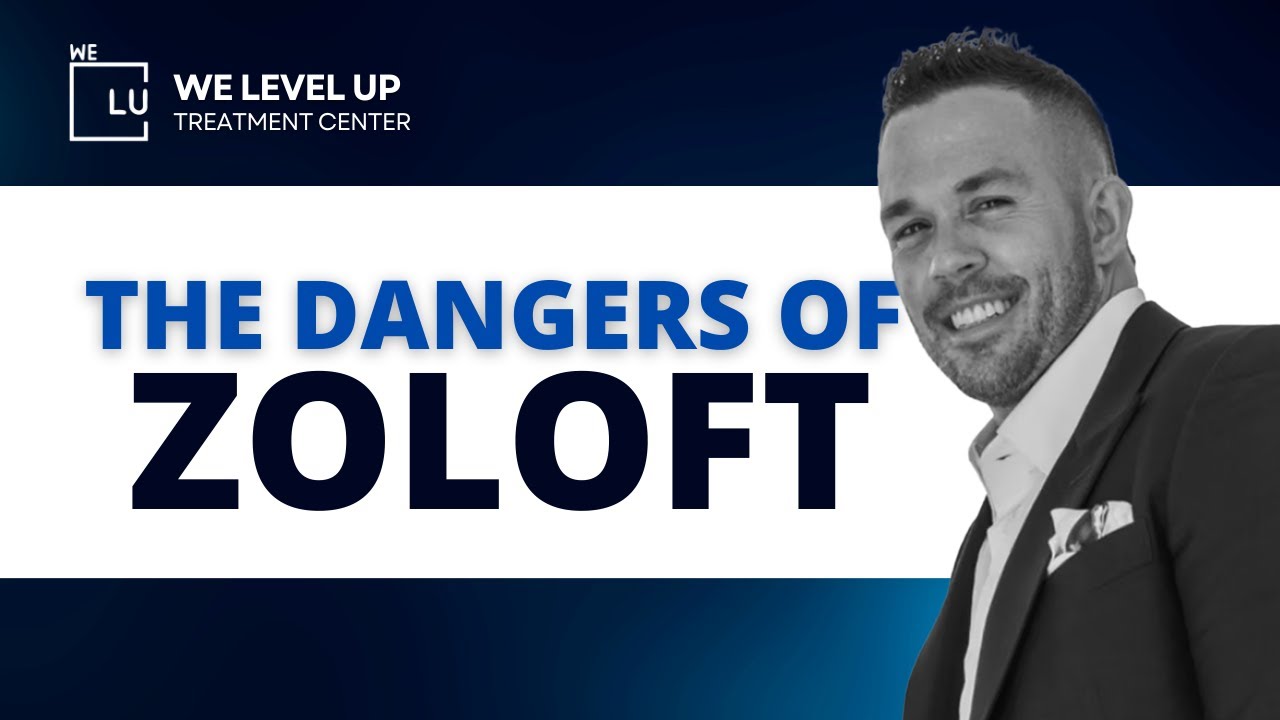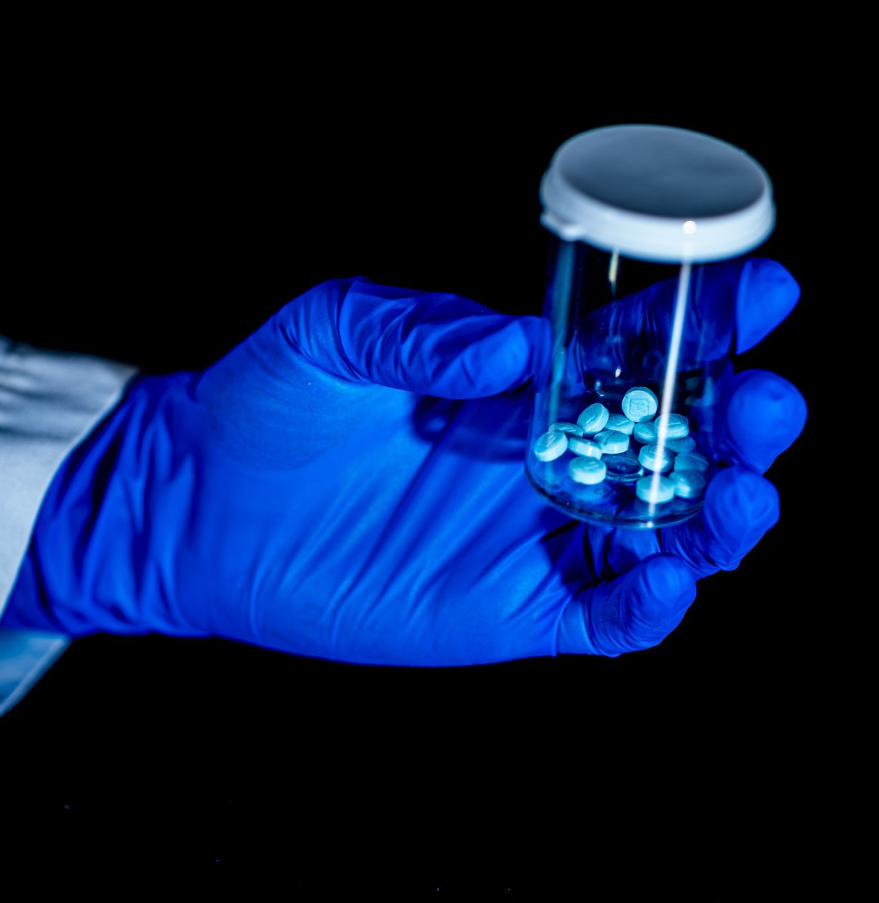What’s a Proper Oxycodone Dosage?
Oxycodone dosage is typically individualized based on various factors such as the severity of pain, the patient’s medical condition, age, and their response to the medication. It’s crucial to follow the prescribing physician’s instructions and adhere strictly to the recommended dosage to avoid potential adverse effects or complications associated with opioid use.
What is Oxycodone?
Oxycodone, another opioid prescribed by doctors, mirrors OxyContin’s pain-relief mechanisms but typically appears in shorter-acting forms like tablets, capsules, or liquid solutions.
Oxycodone’s Uses
Similar to OxyContin, Oxycodone tackles moderate to severe pain by altering how the body processes pain signals. It aids in managing anxiety, fatigue, and sleep difficulties related to chronic pain. Immediate-release and extended-release are the primary forms of Oxycodone, often employed when other pain medications are ineffective or not tolerated well enough. It is typically administered post-surgery, injury, or for specific medical conditions demanding opioid treatment.
Oxycodone’s Side Effects
Common side effects of Oxycodone echo those of OxyContin, including nausea, vomiting, constipation, drowsiness, and dry mouth. Serious effects, such as respiratory depression, low blood pressure, breathing slowdowns, and addiction, can also manifest.
Recommended Oxycodone Dosage For Pain
Usual Adult Doses Oxycodone for Pain
Immediate-release: As the first opioid analgesic, Recommended oral dosage ranges from 5 to 15 mg every 4 to 6 hours. To avoid dosing errors, the oral solution should clearly state the total dose in milligrams (mg) and milliliters (mL).
Converting from Other Oral Opioids: It’s crucial to consider individual patient variability in opioid drug potency when transitioning from different opioids or controlled-release products. Underestimating the oxycodone requirement is preferable to avoid overdose situations.
Suggestions:
- Dosages should be individually adjusted to balance adequate pain relief and minimize adverse reactions.
- To mitigate risks of addiction or misuse, utilize the lowest effective dosage for the shortest duration aligned with treatment goals.
- Close monitoring for respiratory depression is advised within the initial 24 to 72 hours and after any dosage elevation.
Usage: For managing acute pain that necessitates opioid analgesia when other treatment options are insufficient.
Normal Dosage For Oxycodone
Extended-release (ER): For opioid-naive or non-tolerant individuals:
- Oxycodone hydrochloride ER tablets: Initial dose of 10 mg orally every 12 hours.
- Oxycodone (base) ER capsules: Commence with 9 mg orally every 12 hours with food.
Immediate-release (IR): For opioid-naive patients: Initial dosage of 5 to 15 mg orally every 4 to 6 hours on an around-the-clock basis. The oral solution should clearly state the total dose in both mg and mL to prevent dosing errors.
Maintenance: Adjust dosage every 1 to 2 days as needed to achieve a balance between pain management and opioid-related side effects. The aim is to identify the lowest effective dose for the shortest duration consistent with treatment goals.

Skip To:
Learn More:
Max Dose of Oxycodone
- Oxycodone (base) ER capsules: Up to 288 mg. Note: The safety of the excipients has not been established for these capsules; the maximum dose for oxycodone hydrochloride tablets has not been determined.
Equivalent Oxycodone Hydrochloride to Oxycodone Base:
- Oxycodone hydrochloride 10 mg = Oxycodone base 9 mg
- Oxycodone hydrochloride 15 mg = Oxycodone base 13.5 mg
- Oxycodone hydrochloride 20 mg = Oxycodone base 18 mg
- Oxycodone hydrochloride 30 mg = Oxycodone base 27 mg
- Oxycodone hydrochloride 40 mg = Oxycodone base 36 mg
Considerations
- Higher initial doses in non-opioid tolerant patients may induce fatal respiratory depression, necessitating careful selection of initial doses based on multiple factors.
- Opioid-tolerant individuals have received specific opioid doses for a week or longer.
Usage: For managing severe chronic pain requiring daily, continuous, long-term opioid treatment when other options are insufficient.
Get Help. Get Better. Get Your Life Back.
Searching for Accredited Drug and Alcohol Rehab Centers Near You? We Level Up Texas Is Opening Soon!
Even if you have failed previously and relapsed, or are in the middle of a difficult crisis, we stand ready to support you. Our trusted behavioral health specialists will not give up on you. When you feel ready or just want someone to speak to about therapy alternatives to change your life call us. Even if we cannot assist you, we will lead you to wherever you can get support. There is no obligation. Call our network hotline today.
FREE Addiction Hotline – Call 24/7
How To Properly Use Oxycodone Dosages
This medicine is not recommended beyond the prescribed dose, frequency, or duration. Elderly patients, in particular, should be cautious due to their heightened sensitivity to pain medications. Extended use or excessive consumption over an extended period can lead to the development of dependence, both mentally and physically.
Understanding the Opioid Analgesic REMS (Risk Evaluation and Mitigation Strategy) program guidelines is essential to prevent addiction, abuse, or misuse of oxycodone. Accompanying the medication should be a Medication Guide and a leaflet containing patient information. Please read and follow these instructions meticulously. It is advisable to revisit the information each time you refill your prescription in case of any updates. Should any queries arise, consult your doctor.
Oxycodone extended-release capsules or tablets are meant solely for patients who have been previously using narcotic pain medications, also known as opioids. These individuals are identified as opioid-tolerant patients. If you are uncertain whether you fall under this category, consult your physician before commencing this medication.
When using the oral liquid concentrate, utilize the calibrated dropper provided with the package. Your doctor may instruct you to mix the concentrate with a small portion of liquid or food. Adhere closely to these directives and consume the medication mixture promptly.
Employ a marked measuring spoon, oral syringe, or medicine cup when measuring the oral liquid. Be aware that an average household teaspoon may not hold the correct volume of liquid.
For Users of Extended-Release Capsules
Take this medicine with food and maintain consistency in the quantity of food intake each time. If you experience difficulties swallowing, you may open the capsule and sprinkle its contents onto soft foods (e.g., applesauce, pudding, yogurt, ice cream, or jam) or into a cup and consume it immediately. Follow up with a glass of water to ensure the complete intake of the medicine.
Sometimes, this medication may be administered through a nasogastric or gastrostomy tube. Note that oxycodone extended-release capsules or tablets function differently from regular oxycodone oral solutions or tablets, even when the dosage remains the same. Avoid switching between different brands or forms unless directed by your physician.
Missed Oxycodone Doses
If you forget to take a dose of this medication, take it promptly when you remember. Yet, if it’s nearly time for your next scheduled dose, skip the missed one and return to your usual dosing routine. Avoid taking double doses.

Get Your Life Back
Find Hope & Recovery. Get Safe Comfortable Detox, Addiction Rehab & Dual Diagnosis High-Quality Care.
FREE Addiction Hotline – Call 24/7Immediate Effects of OxyContin or Oxycodone Use
- Sensations of euphoria.
- Feelings of relaxation.
- Significant reductions in the perception of pain.
- Notable reductions in anxiety.
- Increased sedation.
Common Side Effects of Oxycodone Use
- Gastrointestinal issues: nausea, stomach cramps, vomiting, and constipation.
- Drowsiness, flushing, sweating, dry mouth, and loss of appetite.
- Weakness, headaches, and dizziness.
- Allergic reactions include hives, itching, rash, and swelling of the face, throat, tongue, lips, or extremities.
- Respiratory problems, usually decreased breathing but potentially serious issues including difficulty swallowing.
- Postural hypotension causes a drop in blood pressure upon standing.
- Other cardiovascular complications: changes in heartbeat or blood pressure.
- Extreme lethargy or comatose states (more frequent with overdoses).
- Seizures, although rare.

Long-term Effects of Oxycodone Use
- Development of a severe tolerance.
- Emergence of withdrawal symptoms (indicative of physical dependence).
- Potential development of an opiate use disorder.
- Occasional cases of liver and kidney failure after extended use.
- Brain changes lead to issues with attention, memory, and problem-solving.
When used as prescribed and monitored by a physician, the risk of detrimental long-term effects related to medicinal use is significantly minimized. Prolonged misuse raises the likelihood of these adverse long-term effects, as well as the risk of overdose due to binge usage or mixing drugs, such as alcohol, which can potentially be fatal.
Get Help. Get Better. Get Your Life Back.
Searching for Accredited Drug and Alcohol Rehab Centers Near You? We Level Up Texas Is Opening Soon!
Even if you have failed previously and relapsed, or are in the middle of a difficult crisis, we stand ready to support you. Our trusted behavioral health specialists will not give up on you. When you feel ready or just want someone to speak to about therapy alternatives to change your life call us. Even if we cannot assist you, we will lead you to wherever you can get support. There is no obligation. Call our network hotline today.
FREE Addiction Hotline – Call 24/7Lethal Dose of Oxycodone
The lethal dose refers to the quantity of a substance that is capable of causing death. The lethal dose can vary significantly from one individual to another due to factors like tolerance, metabolism, and overall health condition. The lethal dose is a critical measure used in toxicology to assess the potential risk associated with substances and to understand the safety margin between an effective therapeutic dose and a dose that could cause fatality.
These parameters are crucial as exceeding the maximum dose can lead to severe side effects or toxicity, potentially resulting in life-threatening complications. Healthcare providers carefully determine dosages to ensure the drug’s effectiveness while minimizing the risk of adverse reactions. Always adhere to prescribed dosages and seek medical advice or emergency assistance if there are concerns about overdose or toxicity.
Potential Warnings on Dosage Oxycodone
Oxycodone carries a potential risk of abuse and addiction, increasing the possibility of overdose and fatal outcomes. It might also result in severe, potentially life-threatening breathing difficulties. To minimize these risks, your healthcare provider should prescribe the lowest effective dose of oxycodone for the shortest duration possible.
Breathing problems may be more pronounced when beginning this medication, after dosage adjustments, or when an incorrect dose/strength is taken. Combining this medication with alcohol or other substances that induce drowsiness or respiratory issues can lead to severe side effects, including death.
Additionally, other drugs may impact the elimination of oxycodone from your system, affecting its efficacy. Familiarize yourself with oxycodone’s administration guidelines and medications that should be avoided. Review the Drug Interactions section for more information. Seek immediate medical attention if severe side effects like slowed or shallow breathing, unusual dizziness, extreme drowsiness, or difficulty awakening occur.
Safeguard this medication to prevent theft, misuse, or abuse. If someone unintentionally ingests this drug, seek immediate medical assistance.
For women of childbearing age, discussing the risks and benefits with their doctor(s) before using this medication is crucial. Notify your doctor if you are pregnant or planning a pregnancy. During pregnancy, use this medication only when necessary, as it may slightly heighten the risk of birth defects within the first two months of pregnancy. Prolonged or high-dose usage close to the expected delivery date might negatively impact the unborn baby.
To mitigate these risks, use the lowest effective dose for the shortest duration. Newborns born to mothers who used this medication extensively may exhibit severe (possibly fatal) withdrawal symptoms. Notify the doctor promptly if you observe persistent crying, slowed breathing, irritability, tremors, vomiting, diarrhea, feeding difficulties, or inadequate weight gain in your newborn.
Precautions on Oxycodone Doses and Medical History
Inform your healthcare provider or pharmacist about any allergic reactions to oxycodone, other opioid pain relievers, or any other allergies you may have. The inactive ingredients present in this product could trigger allergic reactions or other complications. Consult your pharmacist for more information.
Before commencing this medication, disclose your medical history to your healthcare provider or pharmacist. This includes any brain disorders, breathing problems like asthma or sleep apnea, kidney or liver disease, mental or mood disorders, history of substance use disorder, gastrointestinal issues, urinary difficulties, gallbladder or pancreatic disease.
Cautionary Advice
Liquid forms of this medication may contain sugar, aspartame, and alcohol. If you have conditions like diabetes, alcohol dependence, liver disease, phenylketonuria (PKU), or any other dietary restrictions, consult your doctor or pharmacist for safe usage.
Special Considerations for Certain Groups
Elderly individuals might be more susceptible to side effects such as confusion, dizziness, drowsiness, and respiratory depression.
During pregnancy, use this medication only if necessary, as it may pose risks to an unborn baby. Discuss the potential risks and benefits with your doctor.
For breastfeeding individuals, this drug can pass into breast milk and have adverse effects on the nursing infant. Report any unusual symptoms in your baby, such as excessive sleepiness, feeding difficulties, or breathing issues, to your doctor promptly. Seek medical advice before breastfeeding while using this medication.
Interactions with Medications and Conditions
An interaction occurs when a substance alters how a drug functions, potentially causing harm or hindering its effectiveness. It’s crucial to avoid alcohol consumption while using immediate-release oxycodone or OxyContin, as this combination can be fatal.
Various drugs and medical conditions may interact with both immediate-release oxycodone and OxyContin:
- Other pain medications, certain drugs for mental health conditions, tranquilizers, sleeping aids, and alcohol may lead to breathing issues, low blood pressure, extreme fatigue, or coma.
- Skeletal muscle relaxers could result in breathing complications.
- Pain drugs operating similarly to immediate-release oxycodone or OxyContin might heighten the risk of side effects.
- Certain antibiotics, antifungal medications, heart medications, seizure drugs, and HIV drugs might alter the effectiveness of immediate-release oxycodone or OxyContin or increase the likelihood of side effects.
Opening Soon! First-Class Facilities & Amenities
World-Class High-Quality Addiction & Mental Health Rehabilitation Treatment
Coming Soon! Rehab Centers TourRenowned Addiction Centers. Serene Private Facilities. Inpatient Rehab Programs Vary.
FREE Addiction Hotline – Call 24/7Proven recovery success experience, backed by a Team with History of:
15+
Years of Unified Experience
100s
5-Star Reviews Across Our Centers
10K
Recovery Success Stories Across Our Network
- Low Patient to Therapist Ratio
- Onsite Medical Detox Center
- Comprehensive Dual-Diagnosis Treatment
- Complimentary Family & Alumni Programs
- Coaching, Recovery & Personal Development Events
We Level Up Dual Diagnosis Treatment
The definition of dual diagnosis, also known as co-occurring disorders, can vary among institutions. Generally, it refers to simultaneously treating a substance use disorder and a mental health disorder. Treating individuals with co-occurring disorders is a crucial aspect of our inpatient treatment. Co-occurring disorders are strongly linked to substance abuse.
We create treatment plans that address withdrawal symptoms, the psychological aspects of drug use, and managing underlying mental health disorders to set clients up for success. A comprehensive mental health assessment identifies treatment possibilities. Our dual diagnosis treatment center provides access to mental health counselors, medical professionals, behavioral therapy, and medication treatment, ensuring the highest quality of care.
We understand the intricate relationship between mental and substance abuse disorders, which can result in a destructive cycle of addiction. We specialize in dual-diagnosis cases, offering the best chance for healing and long-lasting recovery.
Recognizing that you may have a mental illness can be challenging. However, treating substance abuse becomes much easier once you receive a proper diagnosis and treatment. Only qualified medical professionals can diagnose these underlying conditions. If you suspect you have a co-occurring disorder, we encourage you to seek a reputable treatment center to begin your journey to recovery. Contact We Level Up today.
Start a New Life
Begin with a free call to an addiction & behavioral health treatment advisor. Learn more about our dual-diagnosis programs. The We Level Up treatment center network delivers recovery programs that vary by each treatment facility. Call to learn more.
- Personalized Care
- Caring Accountable Staff
- World-class Amenities
- Licensed & Accredited
- Renowned w/ 100s 5-Star Reviews
We’ll Call You
How Long Do Opiates Stay in Your System?
Search We Level Up TX Oxycodone vs Oxycontin, Differences, and Similarities Topics & Resources
Sources
- Drug Enforcement Administration. “Oxycodone.” April 2020. Doses for oxycodone, oxycodone dose, oxycodone doses, max dosage of oxycodone – Related Articles
- Canadian Agency for Drugs and Technologies in Health. “Opioid Formulations With Tamper-Resistan[…]roducts and Policies.” March 2017. Doses for oxycodone, oxycodone dose, oxycodone doses, max dosage of oxycodone – Related Articles
- Sadiq, Nazia M.; Dice, Travis J.; Mead, Therese. “Oxycodone.” May 19, 2021, Doses for oxycodone, max dosage of oxycodone, max oxycodone dosage – Related Article
- Drugs.com. “Oxycodone.” March 29, 2021. Doses for oxycodone, max dosage of oxycodone, max oxycodone dosage – Related Article
- Broussard, C. S., Rasmussen, S.A., Reefhuis, J., Friedman, J. M., Jann, M. W., Riehle-Colarusso, T., &Honein, M. A. (2011, April). Maternal treatment with opioid analgesics and risk for birth defects. American Journal of Obstetrics and Gynecology, 204(4), 314.e1-314.e11
http://www.ajog.org/article/S0002-9378(10)02524-X/fulltext highest dose of oxycodone, max dosage of oxycodone, highest dose of oxycodone, oxycodone dosage – Related Articles - Oxycodone hydrochloride- oxycodone hydrochloride tablet. (2015, August)
http://dailymed.nlm.nih.gov/dailymed/drugInfo.cfm?setid=df9313c5-e454-4829-bbb7-2f26d9f85e1e - OxyContin-oxycodone hydrochloride tablet, film-coated, extended-release. (2016, January). Retrieved from
http://dailymed.nlm.nih.gov/dailymed/drugInfo.cfm?setid=bfdfe235-d717-4855-a3c8-a13d26dadede - Oxycodone – U.S. Department of Health and Human Services National Institutes of Health
- How Long Do Opiates Stay in Your System? – https://americanaddictioncenters.org/prescription-drugs/how-long-in-system
- Oxycodone – National Center for Biotechnology Information max dose oxycodone






